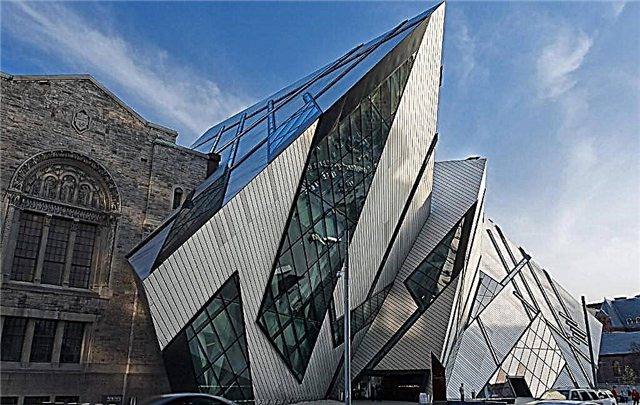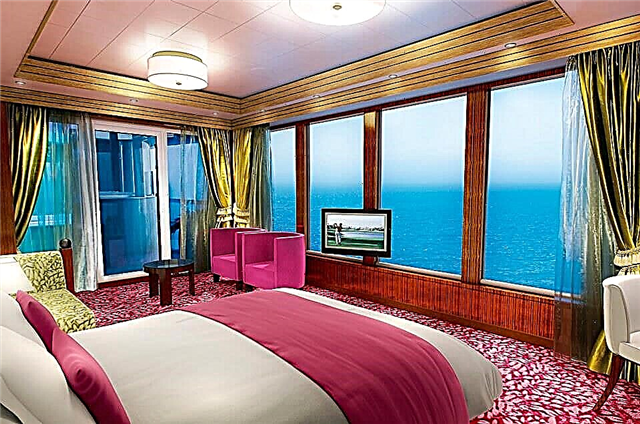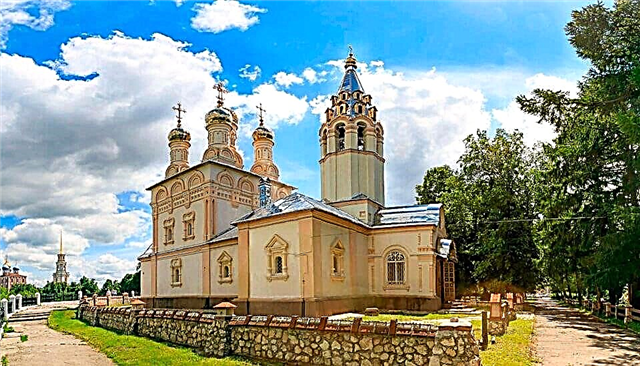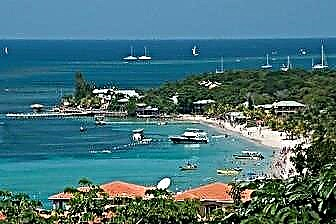A country not filled with tourists, which keeps many secrets and beauties. Without a rich population and developed cities, Honduras boasts white beaches, beautiful rainforests, lush coral reefs and excellent diving conditions. Connoisseurs of ancient cultures will find amazing Mayan ruins here.
Among the most popular islands in Honduras are Roatan, Utila and Guanaja. Diving prices are incredibly low and the water is very clear. The underwater world of Honduras is very rich. It is not polluted by industries and garbage, the nature is beautiful here.
You can enjoy the fauna of Honduras in national parks and reserves. These include the Roatan Institute of Marine Science, where you can swim with dolphins, La Tigra National Park, Rio Platano Nature Reserve, Pico Bonito National Park. Many amazing animals live in their dense forests. To see the Mayan cities, be sure to visit Copan and Quirigua. Their ruins are of great importance in the history and study of the culture of the ancient civilization.
Honduras is a country of pristine nature. The islands are inhabited by friendly and carefree people, and the clear sea and coral reefs attract more and more tourists here. In big cities, you can see beautiful colonial buildings, and on the way to the beach, stumble upon a tall beautiful waterfall.

The best hotels and hotels at affordable prices.
from 500 rubles / day
What to see in Honduras?
The most interesting and beautiful places, photos and a short description.
Roatan Island
The island is located in the Caribbean and belongs to Honduras. Tourists flock here for excellent ecotourism and diving. The water here is very clean, and the reefs are not far from the coast. Therefore, Roatan is considered the best diving destination in the Caribbean. The coral reefs are healthy and well maintained. Dolphins, sharks, turtles and rays can be seen here.

Pulhapanzak waterfall
This is the largest waterfall in Honudras, which is included in almost every excursion program. Its height is 140 meters. It is surrounded by the jungle and is the most popular waterfall in Honduras, but it is quite easy to get to. Guides take tourists inside the waterfall, but it is better not to do this alone.

The ancient city of Copan
Copan is one of the largest Mayan cities. It is believed that he is the embodiment of the highest development of art and culture of the people. The city began to exist at the turn of our era, its heyday falls on the 7th-8th centuries, but after the 9th century it was abandoned. Until 1839, ancient buildings were destroyed by river waters and wild plants. Now the city has more than 100 buildings, amazing statues, columns, burial sites.

Colonial architecture in Comayagua
Comayagua was the capital of Honduras from 1537-1880. Beautiful colonial buildings have been preserved here. Among them is the Cathedral of Comayagua, which has a clock - one of the oldest in the world, the oldest in the city, the most beautiful church of La Merced. There are also the ruins of the convent of San Francisco and the residence of the bishop. There are four museums in the city.

Utila Island
The size of the island is small, only 12 km long and 4 km wide. Utila is considered the cheapest island in Honduras. You can see a whale shark off its coast and even swim alongside it. There are many very cheap diving schools here. The population is pleasant and the atmosphere is relaxed. There are two marine reserves near the island.

Mesoamerican Barrier Reef
It is a 900 km long reef, the second largest in the world. It includes the 280 km long Belize Barrier Reef. Its corals protrude above the water, creating small islands. The underwater world of the reef has half a thousand species of fish; manatees and sea turtles live here. Most of the reef is unexplored. Its most beautiful and deepest cave reaches 300 meters in diameter and resembles a dark blue abyss.

Little French Key
This is a private resort on Roatan Island. Everything here is created for a perfect holiday. The territory includes white beaches with bars and restaurants. There are also bars on the water, a zoo with exotic animals. Tourists are offered spa treatments, sun loungers, hammocks, water beds. Here you can go horseback riding, eat fresh seafood and swim in the sea.

Comayagua street carpets
Comayagua street carpets can be seen during the week between Palm Sunday and Easter. They are made from natural materials: rice, colored sawdust, flower petals, flour, nuts, cereals. The huge carpets depict biblical motifs related to the crucifixion and resurrection of Jesus Christ. Local residents conduct rituals and read the Holy Scriptures.

Roatan Institute of Marine Science
The institute was founded in 1989 for the protection and study of the marine world. Students and schoolchildren come there to gain new knowledge about nature. There are amazing entertainment for tourists. Here you can swim with dolphins, which are not kept in captivity, they swim freely and do whatever they want. Visitors are helped to communicate with them. The staff are nice and helpful.

Kengrejal river
The river flows near the forests of the Pica Bonito National Park. This is one of the most picturesque rivers in Central America. Its length is 25 km. The Kengrejal River provides some of the best rafting conditions in Central America. Fans of extreme sports will have to overcome numerous and difficult rapids. It is better to do this accompanied by professional instructors, it is not safe to do it alone.

La Tigra National Park
La Tigra is the oldest national park in Honduras. This is one of the most beautiful places in the country. The area of the park is 7482 hectares. It is located at an altitude of 1800 to 2185 meters above sea level. There are preserved virgin forests in which more than 200 species of birds, ocelots, cougars, monkeys live. Also in the park grows erythrina - a sacred Mayan tree.

Lake Yohoa
It is the largest lake in Honduras. Its area reaches 285 sq. km. The average depth of the lake is 15 meters. It is of volcanic origin and is located at an altitude of 700 meters. The lake is bordered by two national parks, and there are restaurants on its shore. More than 800 species of different plants grow near the water and 400 species of birds live.

Jeanette Cavas National Park
The park was founded in 1994 on the Caribbean coast. Its area is 781 sq. The park has white sandy and rocky beaches, swamps, forests, coral reefs, lagoons and rivers. Many animals live there. Among them, fish, birds, several species of dolphins, crocodiles, iguanas, snakes and monkeys.

Guanaja Island
Columbus discovered the island in 1502 and named it the island of pines. It is located 76 km from the coast of Honduras. The island is 18 km long and 6 km wide. Many rare Caribbean pines grow on the island today. It also has a mountain 500 meters high. The locals are very friendly and there are not many tourists. The island has white beaches and very clear water.

Pico Bonito National Park
Pico Bonito was founded in 1987. It occupies 564 sq. and is located in the north of Honduras. The difference in height in the park ranges from 60 to 2480 meters. The park includes the Nombre de Dios Pica Bonito mountain range, which is visible even from Roatán in good weather. The territory of the park is filled with tropical forests, which are crossed by rivers and streams. Among the representatives of the fauna are rare butterflies, birds, primates, artiodactyls.

Cayos Cochinos Islands
These islands are located 30 km. from the large Honduran city of La Ceiba. They have been declared a nature reserve, and tourists call them heaven on earth. Few fishermen live on them, a hotel and a drive center work. The sea is clean here, the local cuisine consists mainly of fish.Diving is often done here, because the water is calm and clear. A boat can be rented for a small fee.

Lansetilla Botanical Garden
The park was founded in 1926 by a railway company. It is now the second largest botanical garden in the world. More than 350 species of amazing birds and various animals live on its territory. Visitors are guided through the largest orchard and bamboo forest. Then the Lansetilla river appears, in which you can swim.

Museum of National Identity in Tegucigalpa
Tegucigalpa is the capital of Honduras, which lies in the mountainous valley of the Choluteca River. The Museum of National Identity is one of the most visited museums in the city. It works from Tuesday to Sunday. There are exhibits related to the history and culture of Honduras, as well as a stage for public performances. There you can also see a virtual tour of the ruins of the ancient Mayan city - Copan.

Rio Platano Biosphere Reserve
The reserve is located in the northeast of Honudras. It was founded in 1982, its area is 5250 sq. Km. Included in the UNESCO heritage list. On the territory of Rio Platano, 2000 representatives of the Mosquito people live. The Rio Platano River flows through the reserve. Its rainforests are rich in expensive mahogany, which is illegally exported from here. It is home to 400 species of birds, representatives of the cat family.

El Kusuko National Park
El Cusuko is located 20 km from the city of San Pedro Sula. The park has a very rich flora. Mountain oaks here reach 40 meters in height. Broadleaf tobacco and conifers also grow here. The thickets of grapes and orchids add to the picturesqueness. The national park is home to about a hundred exotic birds, salamanders, monkeys, jaguars.

Botanical Gardens of Karambola
Ecotourism is preached in the gardens. The jungle is decorated with wild orchids and fruit trees. There are many streams on the territory of the gardens, various birds and animals live. The guides tell stories about nature and lead tourists up the mountain for great views. The gardens are also home to the popular chocolate tree.

Taulabe caves
These are the caves located in the city of Comayagua. The explored area is 12 km. Tourists have access only 400 meters deep into the caves. The caves themselves are very dry. Inside there are paths that are interestingly highlighted. In addition, different corners of the caves are illuminated, creating amazing shadows.

Archaeological Park and Ruins of Quirigua
The city of Quirigua emerged in the 2nd century, and in the 8th century it was the capital of an independent state. The city flourished at this time. The remaining drawings, sculptural calendars and ruins of buildings serve as a huge source of knowledge about the Mayan culture. There are also many sculptures that depict various aspects of human life. Quirigua is included in the UNESCO heritage list.












